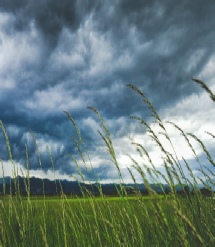





Gardening: Appreciating Change: (2) Wonder, Weather & Watching the Seasons
Recap
In the first part of this mini-
Testimonies to Change
The Internet is always a great source of quotes and in my preparation for the talk I had been asked to give, I browsed some of the resources. It is surprising to find comments from well known people. For instance even the Bard used a gardening illustration: “At Christmas I no more desire a rose, than wish a snow in May’s new-
Because we can get so caught up with life, just pausing up, and going and taking a fresh look at the wonder that is your garden can help bring perspective. It was Claude Monet who apparently said, “My garden is my most beautiful masterpiece.” Now if that is true, that is amazing. I love his misty water paintings, his gardens and his lilies (not so keen on his haystacks which leave me a bit unmoved) but I realise that painters are often some of the best observers of the world around them and so for him to declare this about his garden is a real challenge to go back outside and just look!
.
1. The Changes of the Weather
Well enough of the generalities, let’s get into this subject of change. I’ll come to the seasons next but as I have thought back over the years I realise that unusual weather has contributed quite a lot to the changes that have taken place in our garden. We moved into this present house in 1977 and pottered on rather uneventfully, I suspect, in the garden at least, for the next ten years until, in October 1987, what has since been referred to as ‘The Great Storm’ hit and overnight we lost seven trees. Because I wasn’t so observant of these things back then, I am left with a memory that that was probably a large percentage of the trees we had. If I tell you that since then I have planted over forty trees in this garden, that is not an exaggeration and I will pick this up and explain it later on. (No, we don’t have a densely populated wood, I will explain later, please be patient.)
That one-
But these two events – the hurricane of ’87 and later prolonged drought – caused substantial changes to the structure of our garden. Meanwhile if we believe what we are told, the climate of the south-
2. The Seasons
We now move into the most obvious of the factors of change that impacts any garden and there is little you can do – or should want to do – to change it. Just observe it and relish it. I carried out a straw poll at the talk I gave and two thirds opted for Spring as their favourite season, and one third opted for Autumn, or the Fall as our American cousins would say. Hands resolutely stayed down for Summer and Winter. I can understand that because the choice was for the favourite season, but I wonder if I can stir afresh here, an appreciation for the other two seasons as well. Let’s have a quick look at each season.
Spring
Yes, I have to agree, I love Spring, but I wonder if it is with mixed motives. It is not just the signs of new life emerging; it has to also be the recognition that this is saying goodbye to Winter. I’ll leave the comments about Winter until later but as much as I may appreciate certain aspects of it, I really do appreciate its disappearance!
But Spring isn’t a consistent, uniform season, it comes in waves. The first wave is gentle, the appearance of the snowdrop, the occasional crocus, hellebores. (Whatever you do, don’t ever let your children use the Internet to do school projects in this area – I look at what is suggested for Spring flowers and think they must be in another world – oh yes, America probably with its staggeringly varying climate zones). Then there are primroses and an abundance of daffodils – gone are the days of thinking there was just one sort of daffs. The second wave is the arrival of forget-
Meanwhile the broad beans, sown last November, are reaching maturity. It will be a while yet before bean-
Summer
I would have carelessly nominated Spring and Autumn as the two seasons of change, but the reality is that most change takes place in Summer! Yes, this is the time of life in abundance, this is the time of planting out the plugs, pricking out the early seedlings, sowing beans, peas, beetroot, potatoes and so much more. Really there is so much happening that whatever we say about summer will be inadequate. If the weather is kind to us, it is the period for sitting out and enjoying the wonder of colour and shape, light and shade. Writing in Spring I am longing for the year to move on because last year we invested in several grasses and although there are one or two tiny signs of life, most of that will come in summer and on into Autumn, and I can’t wait for it.
I mention sitting out and for us, our garden is divided into many parts or areas, allowing for at least ten different seating areas. This is part of what it is what it is all about. Appreciating the garden (as against gardening) needs different views and that means a bench here, a chair here and there, an arbour there, oh, and another bench here as well. It also means creating ‘areas’ that are different from one another. Yes, I do appreciate the big sweeping lawn-

